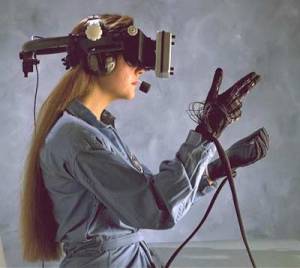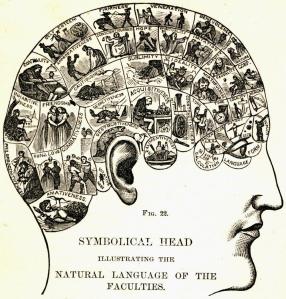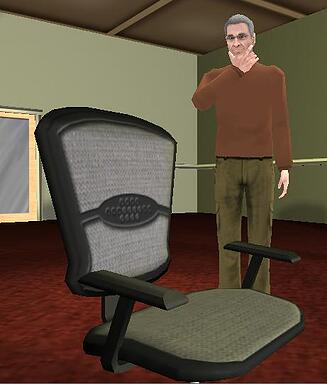 by Rich Mesch
by Rich MeschThis is the second entry based on my conversations with Dr. Keysha Gamor, a fellow aficionado of 3D learning. In the last entry, I wrote about Keysha’s experience implementing Virtual Reality solutions in secondary education. In this entry, I wanted to share some of the conversations we had on the effectiveness of Virtual World platforms and the acceptance (or lack thereof) that we’ve seen in organizations. As Keysha works mostly with government and military, she brings a unique perspective (I work almost exclusively with corporations). Generally speaking, government and military have had a higher adoption rate for 3D learning than the business world. What are they finding effective about the virtual environment, and what does the corporate world have yet to learn?
I asked Keysha if she was seeing higher levels of adoption of Virtual Immersive Environments (VIEs) in the public sector, and she agreed that was the case. However, many of these initiatives are in a pilot or exploratory phase. And the biggest concern in the public sector is similar to the private sector: how do we ensure data security?
So how do we mainstream this capability? We brainstormed many possibilities, but it really comes down to three categories:
- What are the barriers to adoption now? Much has been written about the technological barriers, but not enough about the cultural barriers. For example:
- Treating VIEs as if they are a unique technology. Most people see learning and performance improvement as a system; they want to understand how each part of the system contributes to the whole. VIEs are too often introduced as the hot new technology; that builds temporary interest, but actually works against adoption. We need to answer the question: how will VIEs contribute to overall performance improvement and not just be a flavor-of-the-month.
- Cognitive Load. The good news is that VIEs (like many simulated environments) can create a profound emotional reaction from learners. That’s a good thing, because we want a learning environment to mirror the real world and evoke the same response the real world does. But we also need to be prepared to address and process those reactions. It’s okay when training makes people upset (or elated), as long as that response is used for growth.
- If you build it, they will come. Yes, they will. Once. So many VIEs are just like billboards, just a shingle hung on the wall where there really isn’t anything to do. There needs to be a reason to come back again and again and again. There needs to be a compelling reason to return, a reason to engage, not just watch.
- What are the clear success stories? One of the most successful implementation of VIEs today is military simulations. Military trainers have identified real problems troops face in the field and created scenarios to address those problems. Obviously, many military situations involve life-or-death decisions, so accuracy is critical. Military simulations use real geospatial data to map the terrain to closely match what the real life experience. And the military is not satisfied with 3D learning, but is also looking to bring smells into the virtual space; not only is the ability to analyze what you smell critical in combat situations, olfactory is often identified as the most evocative sense as pertains to memory.
- What’s changing in our culture that will support adoption? Some of us are old enough to remember when e-mail was a new and scary technology. But not only was it adopted, it became integral to the way we live our lives. As we move to adopt VIEs, we need to consider the social climate. We need to realize that we aren’t in the mainstream. One of the factors that is helping us to move forward is Social Media. Social Media has become highly integrated into our lives. Now that people have had their eyes opened to the possibilities of online social environments, they’re starting to dream a little bit. That’s the momentum we need to make this capability mainstream.
One of Keysha’s parting thoughts was how much the movie Avatar helped her talk about VIEs. While the movie itself doesn’t have anything to do with VIEs, many people were unfamiliar with the word “avatar” before they saw the film. Avatar helped build the common language that allows us to have these conversations with others—and a common language is the first step to successful change.



 o you want your learners to collaborate? To demonstrate leadership skills? To drive towards a goal? To evaluate and analyze situations before committing to a decision? To value the perspectives of others? To improve performance?
o you want your learners to collaborate? To demonstrate leadership skills? To drive towards a goal? To evaluate and analyze situations before committing to a decision? To value the perspectives of others? To improve performance? nesses about using games to improve performance way back in 1985. Back then, I was working mostly with mid-level and senior mangers, so talking about games required hushed tones and euphemisms. After all, busy important managers couldn’t spend time playing games. They had big, big decisions to make. And so what if the game was designed to help them be even more effective in making those big, big decisions? This was serious business. They weren’t games; they were “experiences,” or “competitions,” or “challenges.” Or maybe you just didn’t talk about it at all.
nesses about using games to improve performance way back in 1985. Back then, I was working mostly with mid-level and senior mangers, so talking about games required hushed tones and euphemisms. After all, busy important managers couldn’t spend time playing games. They had big, big decisions to make. And so what if the game was designed to help them be even more effective in making those big, big decisions? This was serious business. They weren’t games; they were “experiences,” or “competitions,” or “challenges.” Or maybe you just didn’t talk about it at all.


 A few months back,
A few months back, Reni: I read an article on The Economist titled:
Reni: I read an article on The Economist titled:  Rich: I attended several learning conferences this year, and at each one, I heard some variation on this message: it's time to get past old school training models, because the generation of 20-somethings entering the work force don't learn that way. We need social media for the 20-somethings, because that's how they learn. We need virtual environments for the 20-somethings, because that's how they learn. And every time, I wanted to scream from the back of the room, "HEY! I'M A 40-SOMETHING, AND I LEARN THAT WAY, TOO!"
Rich: I attended several learning conferences this year, and at each one, I heard some variation on this message: it's time to get past old school training models, because the generation of 20-somethings entering the work force don't learn that way. We need social media for the 20-somethings, because that's how they learn. We need virtual environments for the 20-somethings, because that's how they learn. And every time, I wanted to scream from the back of the room, "HEY! I'M A 40-SOMETHING, AND I LEARN THAT WAY, TOO!"
